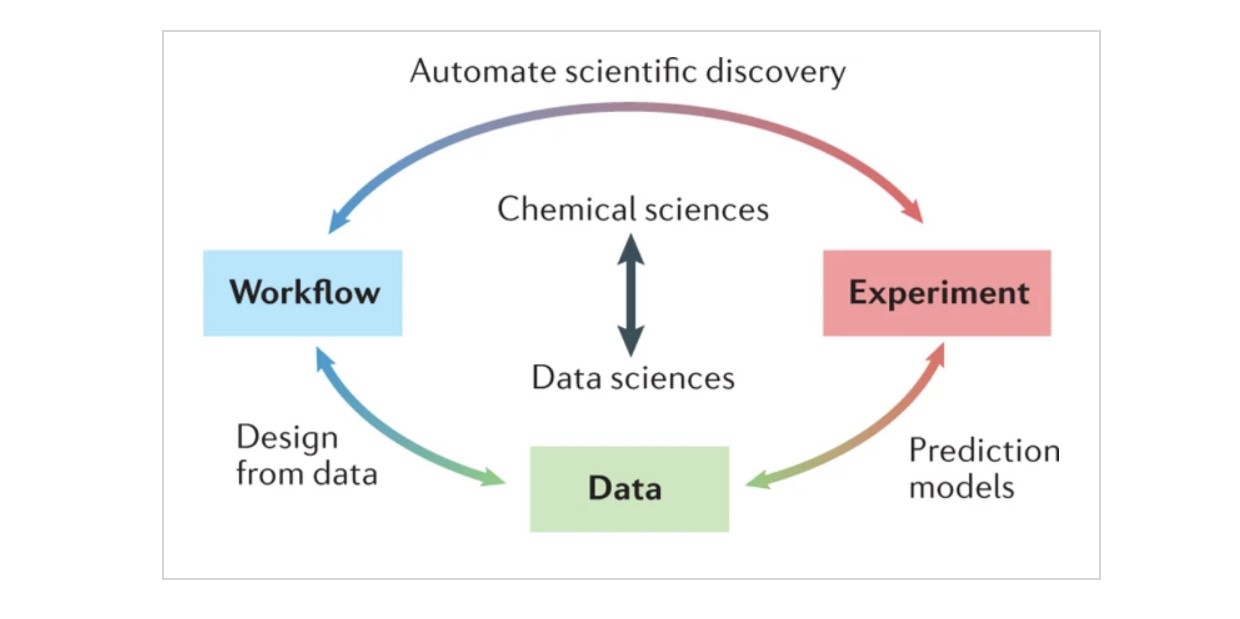
Chemical product development is complex and time-consuming, requiring meticulous data management, collaboration, and strict regulatory standards. Fortunately, modern technology offers solutions to many of these challenges, and electronic laboratory notebooks (ELNs) and laboratory information management systems (LIMS) are at the forefront of this transformation. This article will explore how ELNs and LIMS can significantly accelerate your chemical product development process.
Streamlining Data Management

In chemistry, data is king. Researchers generate copious amounts of data through experiments, observations, and analysis. Managing this data has traditionally been a cumbersome task, often relying on handwritten notes and spreadsheets. ELNs and LIMS change the game by streamlining chemical data management.
Electronic laboratory notebooks allow researchers to record experimental procedures, observations, and results digitally. This eliminates the need for paper-based records and makes data instantly searchable and shareable. With ELNs, you can effortlessly organize and retrieve critical information, saving valuable time and reducing the risk of data loss or errors.
On the other hand, laboratory information management systems take data management a step further by centralizing data storage, automating data entry, and ensuring data integrity. By automating routine data management tasks, LIMS frees researchers to focus on their core scientific work, accelerating experimentation and analysis.
Enhancing Collaboration
In today's globalized research landscape, collaboration is essential for advancing chemical product development. ELNs and LIMS provide the digital infrastructure needed to facilitate collaboration among researchers, whether they are in the same laboratory or scattered across different geographical locations.
Like project management tools, ELNs enable real-time collaboration by allowing multiple researchers to access and contribute to a single digital notebook. This fosters teamwork, encourages knowledge sharing, and accelerates project progress. No longer are valuable insights trapped in paper notebooks or isolated on individual computers.
LIMS complements this by centralizing data storage, making it accessible to authorized users regardless of location. Collaborators can access the same datasets, ensuring consistency and coherence in research efforts. These systems allow teams to work together seamlessly, further expediting chemical product development.0
Data Integrity & Compliance
Data integrity and compliance with regulatory standards are paramount in chemical research and product development. Manual data handling and record-keeping methods are prone to errors and may not meet the rigorous demands of regulatory bodies.
ELNs and LIMS offer robust solutions to these challenges through these features:
- Data Traceability: ELNs and LIMS provide detailed audit trails, ensuring every data modification is recorded and enhancing transparency.
- Electronic Signatures: These systems enable secure electronic signatures, meeting regulatory requirements for data validation and authorship.
- Automated Data Capture: Reduces the risk of human errors in data entry, enhancing data accuracy and reliability.
- Regulatory Templates: ELNs and LIMS often include predefined templates aligned with regulatory standards, simplifying compliance documentation.
- Version Control: Ensures that previous versions of data are accessible for auditing and compliance purposes.
Accelerating Experimentation
The heart of chemical product development lies in experimentation. However, traditional laboratory practices often involve time-consuming manual tasks, such as documenting procedures, managing samples, and recording results.
ELNs and LIMS are designed to expedite experimentation through these features:
- Digital Experiment Records: ELNs enable researchers to document experiments digitally, reducing time spent on manual note-taking.
- Sample Management: LIMS streamlines sample tracking and management, ensuring quick access and reducing delays.
- Automated Data Capture and Structuring: ELNs and LIMS automatically capture data from instruments, accelerating data collection. Data is then automatically organized in predefined formats into structured lab data.
- Experiment Templates: Predefined templates in ELNs and LIMS simplify experiment setup, reducing preparation time.
- Real-time Collaboration: These systems facilitate real-time collaboration, enabling researchers to work on experiments simultaneously, regardless of location.
Workflow Automation
Laboratory workflows are intricate processes that require meticulous attention to detail. Researchers routinely face challenges such as time-consuming manual tasks, sample management, and data entry, which can hinder efficiency and slow research progress.
Fortunately, ELNs and LIMS provide effective solutions to these challenges. These tools introduce automation into laboratory workflows, revolutionizing how research is conducted.
- Data Entry Automation: ELNs and LIMS automate data entry, reducing the need for manual transcription and minimizing the risk of errors.
- Sample Tracking: These systems streamline sample tracking, ensuring samples are easily located, reducing delays, and improving overall organization.
- Inventory Management: ELNs and LIMS centralize inventory management, offering a comprehensive view of available resources, preventing shortages, and optimizing resource utilization.
- Experiment Execution: Researchers can use predefined experiment templates, reducing setup time and ensuring procedure consistency.
- Real-time Collaboration: These systems enable real-time collaboration, allowing multiple researchers to work simultaneously, regardless of location, further speeding up research processes.
Real-Time Data Access
Access to real-time data translates to a competitive edge in laboratory research. Researchers often grapple with the challenges of delayed data retrieval, hindering timely decision-making and potentially impeding the progress of chemical product development.
ELNs and LIMS emerge as indispensable tools to overcome these challenges. They offer the promise of real-time data access, transforming how researchers interact with data in laboratory settings.
- Anywhere, Anytime Access: ELNs allow researchers to access digital notebooks from anywhere with an internet connection. This ensures that critical information is never out of reach, fostering faster decision-making and efficient problem-solving.
- Centralized Data Repositories: LIMS offers real-time access to centralized cloud-based data repositories. This means that research teams have instant access to the latest data, facilitating seamless collaboration and reducing delays caused by data retrieval.
Data Analysis & Visualization
In laboratory research, data analysis and visualization are critical for unlocking insights and driving informed decisions. Researchers, however, often encounter challenges, including the time-consuming nature of data analysis and the complexity of creating meaningful visual representations.
ELNs and LIMS emerge as powerful solutions to these challenges. They offer tools and features that facilitate data analysis and visualization, expediting the journey from data to insights.
- Integrated Data Analysis: ELNs often come equipped with data analysis tools and seamless integrations with data visualization software. This enables researchers to perform direct data analysis and create meaningful visualizations within the ELN environment, accelerating the extraction of insights.
- Pattern Discovery: LIMS also contributes to data analysis by providing AI-based capabilities to uncover hidden patterns and trends within complex datasets. Researchers can leverage these features to gain deeper insights into their research, speeding up the discovery process.
Sample & Inventory Management
The cornerstone of efficient laboratory research operations is sample and inventory management. Researchers often grapple with challenges related to sample tracking, resource optimization, and inventory control, leading to resource wastage and workflow inefficiencies.
ELNs and LIMS present robust solutions to these challenges. They offer specialized features tailored to streamline sample and inventory management, ensuring resources are utilized optimally.
- Sample Tracking: ELNs provide specialized tools for tracking and managing samples, ensuring researchers can swiftly and accurately locate required samples when needed.
- Centralized Inventory Management: LIMS centralizes laboratory inventory management, offering a comprehensive overview of available resources. This reduces the risk of material shortages and optimizes resource utilization.
Choosing The Right System

As you consider adopting ELNs and LIMS for your chemical laboratory, choosing the right system that aligns with your specific needs and workflows is essential.
When choosing an ELN and LIMS system for your chemical laboratory, it is essential to consider your specific needs and workflows, as well as the following factors:
- Scalability: Choose a system that can accommodate your growing research needs regarding data volume and user base. This will help you avoid costly migrations down the road.
- Integration: Seamless integration with your existing laboratory informatics, materials informatics systems, and other lab tools is essential for streamlining workflows and promoting data sharing. Look for a system that offers comprehensive integration capabilities and pre-built connectors to popular laboratory tools.
- User-friendliness: The system should be easy for all team members, regardless of their technical expertise. Intuitive interfaces and efficient workflows will help your team adopt the system quickly and realize the ENL benefits.
- Support and training: The vendor should offer comprehensive training and support resources to help you get the most out of the system. Look for a vendor with a proven track record of customer satisfaction.
In addition to the factors listed above, there are a few other things to keep in mind to choosing the right ELN and LIMS system for your chemical laboratory:
- Security: Data security is a top priority for any chemical laboratory. Choose a system with robust security features to protect sensitive data from unauthorized access.
- Compliance: If your laboratory is subject to any regulatory requirements, such as those for Good Laboratory Practice (GLP), choose a system that complies with those requirements.
- Cost: ELN and LIMS systems can be expensive, so it is important to factor cost into your decision-making process. However, it is important to remember that the right system can save you money in the long run by improving efficiency and reducing errors.
Here are some additional tips for choosing the right LIMS and ELN tools:
- Get input from your team: Involve key stakeholders in the selection process to ensure that the chosen system meets the needs of all users.
- Evaluate multiple systems: Don't just go with the first system you see. Take the time to evaluate multiple systems and compare their features, functionality, and pricing.
- Read reviews: Read online reviews from other laboratories that have used different ELN and LIMS systems. This can give you valuable insights into the pros and cons of each system.
- Schedule demos: Once you have narrowed down your choices, schedule demos with the vendors to see the systems in action and ask any questions you have
Conclusion & Future Outlook
In conclusion, ELNs and LIMS are indispensable tools for accelerating chemical product development. These systems streamline data management, enhance collaboration, ensure data integrity, and automate workflows, ultimately saving time and resources.
As technology advances, we can expect ELNs and LIMS to play an increasingly vital role in chemical research and development. By adopting these systems and overcoming implementation challenges, laboratories can position themselves at the forefront of innovation in the chemical industry, bringing new products to market faster and more efficiently than ever before.
By harnessing the power of ELNs and LIMS, you can propel your chemical product development efforts into the future, achieving greater speed, precision, and success in your research endeavors.










